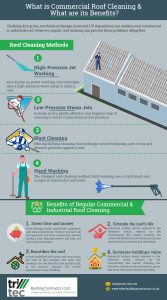Stress Laundering: Everything You Required To Know
Stress Laundering: Everything You Required To Know
Blog Article
Writer-Kjeldgaard Austin
Did you recognize that a stress washing machine can clean up surfaces as much as 1,500 square feet in just an hour? This effectiveness makes it a prominent choice for property owners wanting to preserve their residential or commercial properties. However, not all stress washers are created equal, and picking the ideal type can significantly affect your results. Comprehending security preventative measures and best techniques is crucial to ensure you finish the job successfully and without injury. So, what should you consider prior to you begin stress washing?
Sorts Of Pressure Washers
When it pertains to push cleaning, recognizing the different kinds of pressure washers available can make a substantial difference in your cleansing efficiency.
You'll normally experience 3 major types: electrical, gas, and hot water stress washers.
Electric stress washers are excellent for light-duty jobs, such as cleaning cars or cleansing outdoor patios. They're quieter, simpler to use, and excellent for smaller tasks around your home.
If you need more power for tougher jobs, gas pressure washers are the means to go. They're much more effective and can deal with durable jobs like stripping paint or cleaning big driveways. However, they require more upkeep and can be a little bit louder.
For those truly tough tasks, hot water stress washing machines give the most effective cleansing power. They heat up the water, making it effective for getting rid of oil and oil spots. These are normally made use of in industrial settings yet can be helpful for household customers tackling challenging cleansing projects.
Picking the ideal type of stress washer for your needs will aid you save effort and time, ensuring you get the job done effectively.
Security Precautions
Prior to diving into your stress cleaning job, it's crucial to focus on safety and security precautions to safeguard yourself and your surroundings. Initially, put on proper gear, consisting of safety and security goggles, gloves, and non-slip shoes. These products will certainly protect you from debris and high-pressure water.
Next off, be mindful of your tools. Check the stress washer for any kind of leakages or damages prior to use. See to it all links are tight, and constantly comply with the manufacturer's guidelines relating to operation and maintenance.
When working with chemicals, guarantee you remain in a well-ventilated area and use a mask to prevent breathing in harmful fumes. Maintain a first aid set nearby for any type of minor injuries that may occur during the task.
https://deanmtyfk.blog-eye.com/32873502/stress-washing-vs-standard-cleansing-which-is-extra-reliable in mind to maintain a secure range from electrical outlets, power lines, and various other potential dangers. Be cautious of unsafe surface areas, specifically when using water on pathways or driveways.
Lastly, avoid pointing the nozzle at people, family pets, or delicate surfaces. By complying with these safety preventative measures, you'll develop a much safer workplace and lessen the threat of crashes or injuries while stress washing.
Keep alert, and do not rush your project!
Best Practices for Stress Laundering
One of the best techniques for stress washing is to start with a complete analysis of the surface you'll be cleaning up. Look for any type of damage, loosened products, or locations that require special treatment. This will certainly help you readjust your stress and method as necessary.
Next, pick the best nozzle and pressure setting for the job. https://www.motorbiscuit.com/how-to-get-dried-water-stains-out-of-car-seats/ -angle nozzle is terrific for fragile surface areas, while a slim one works well for tougher spots. Always start with the lowest stress and slowly increase it if required.
Prior to you start, clear the area of any kind of barriers and protect plants, home windows, and other surfaces that could be damaged by the spray.
When cleaning, keep the nozzle at a regular distance from the surface area, and use sweeping movements to avoid streaks. Job inside out to make sure that dust and particles fall away as you cleanse.
Finally, wash the location thoroughly to get rid of any kind of soap or cleaning service deposits. After you're done, inspect your work to ensure you didn't miss any kind of places.
Following these best practices will certainly help you achieve the most effective results while extending the life of your surface areas.
Conclusion
Finally, stress washing can transform your outdoor areas, bring back surfaces, and save you time. Bear in mind to choose the appropriate type of washer for your needs, prioritize safety and security by wearing protective gear, and adhere to finest methods for reliable cleansing. By examining surface areas, picking proper nozzles, and preserving your tools, you'll ensure a successful stress washing experience. So prepare, obtain cleaning, and enjoy the contentment of a work well done!
